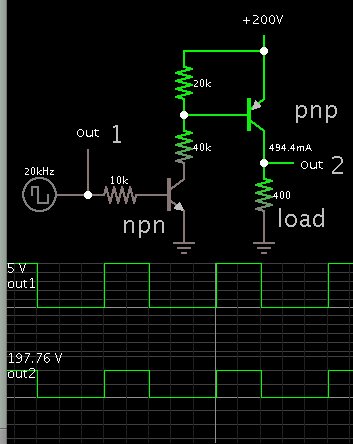umat
Newbie level 3

Hello,
My DC to AC converter circuit (attached) does not produce AC output. I have connected a pulse generator to one pair of the bridge switches. The other pair is connected from the same pulse source except that the inputs are inverted through a not gate.

I intend to replace the pulse generators with microcontroller PWMs after I get the circuit working.
Kind regards.
My DC to AC converter circuit (attached) does not produce AC output. I have connected a pulse generator to one pair of the bridge switches. The other pair is connected from the same pulse source except that the inputs are inverted through a not gate.

I intend to replace the pulse generators with microcontroller PWMs after I get the circuit working.
Kind regards.


